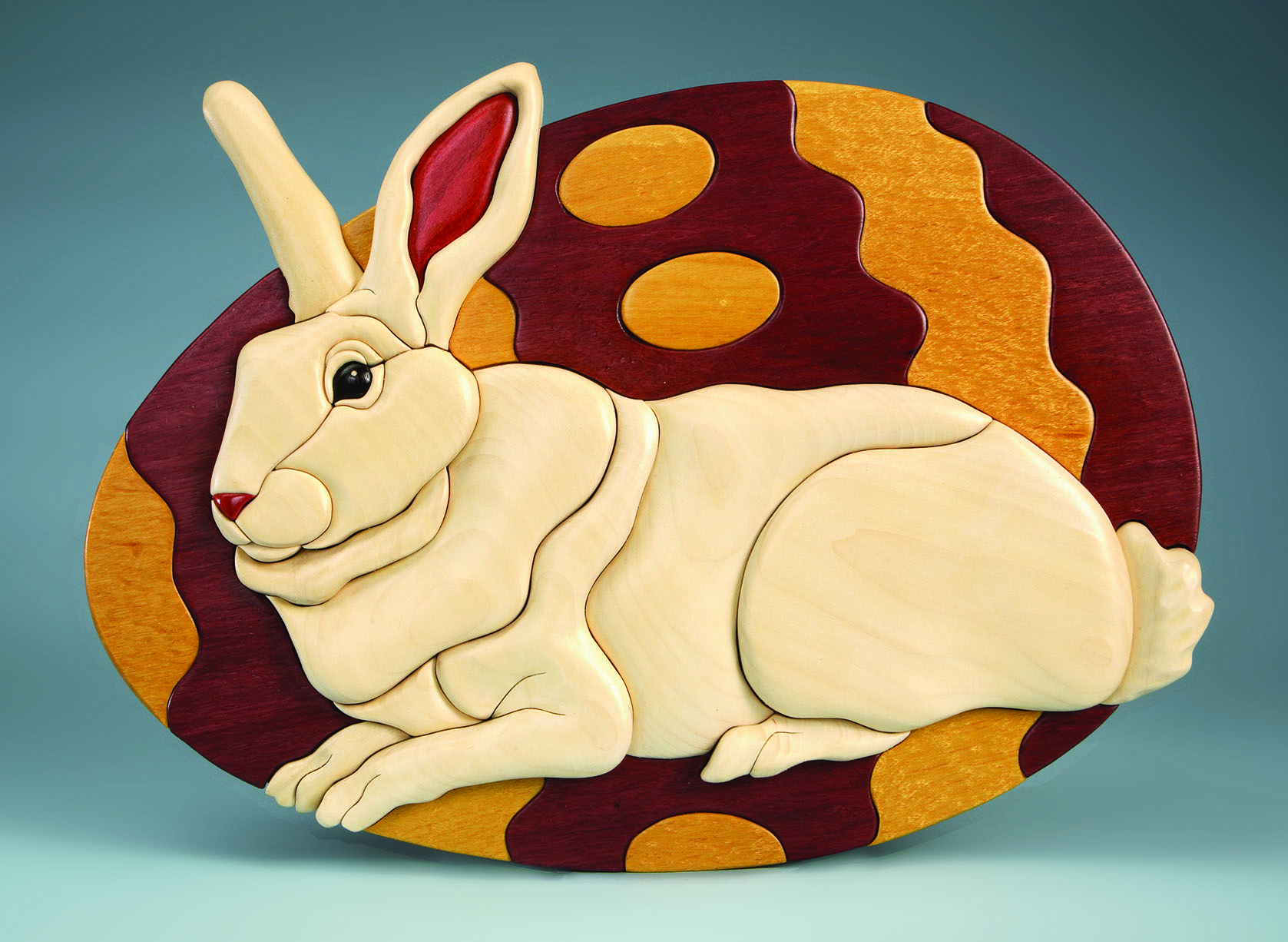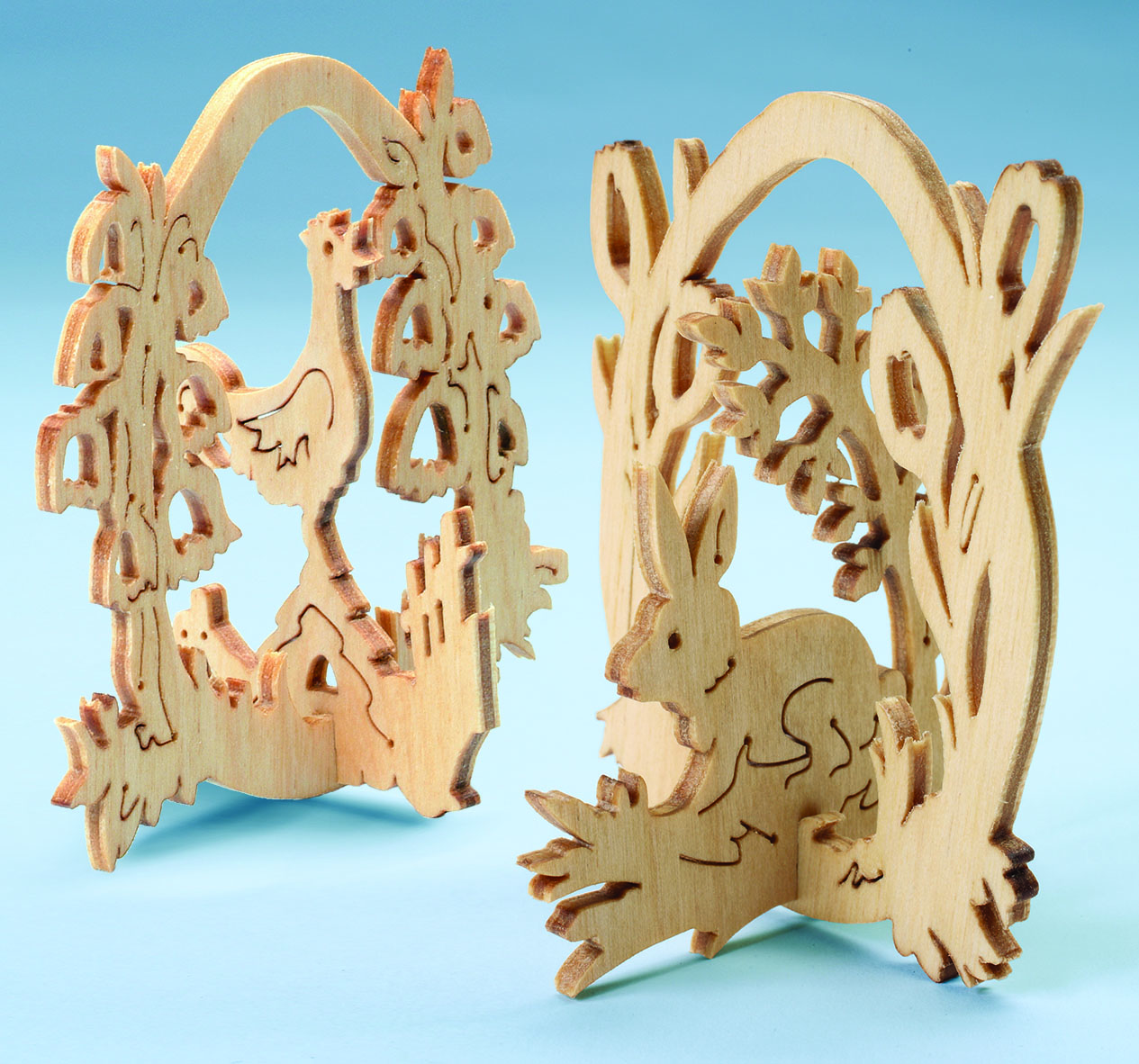![[#Beginning of Shooting Data Section] Nikon D200 2007/11/01 13:51:04.9 RAW (12-bit) Image Size: Large (3872 x 2592) Color Lens: 60 mm F/2.8 D Focal Length: 60 mm Exposure Mode: Manual Metering Mode: Multi-Pattern 1/160 s - F/18 Exposure Comp.: -0.3 EV Sensitivity: ISO 100 Optimize Image: Portrait White Balance: Auto Focus Mode: AF-S VR Control: Long Exposure NR: OFF High ISO NR: Off Color Mode: Mode I (Adobe RGB) Tone Comp.: Auto Hue Adjustment: 0° Saturation: Auto Sharpening: Medium low Flash Mode: Flash Exposure Comp.: Flash Sync Mode: Image Authentication: OFF Image Comment: [#End of Shooting Data Section]](https://scrollsawer.com/wp-content/uploads/sites/2/2016/02/Intarsia-Cross-214x300.jpg)
By Carol and Homer Bishop
We designed this project to represent our faith and as a way to celebrate the birth and renewal of spring.
Created with traditional intarsia techniques, which use only natural wood colors, the design lacked the impact we originally envisioned. We tried several different methods to breathe life into the design, including paint, felt tip pens, and markers. They covered the wood grain and did not provide the desired effect. One morning Carol had an idea. She went to the cupboard and retrieved several bottles of McCormick food coloring. We experimented on scrap wood and immediately knew we had our solution.
A fellow scroller saw the finished piece and challenged us to create a version that he could cut as a fretwork project. Converting the design required only a few minor tweaks. The result is a versatile pattern that can easily be cut as intarsia, segmentation, or fretwork. For the fretwork version, simply do not cut the dashed lines.
Start by sanding your stock and transferring the pattern to the wood. Apply spray adhesive to the back of the pattern and press it down in position on the blank.
Fretwork Cross
Although the fretwork version does require drilling blade-entry holes, it is the simplest version to create. There is no shaping required, and coloring can be completed much faster as there is no need to handle small, individual pieces.
Materials:
Plywood, baltic birch: 1/4″ x 11″ x 17″ (6mm x 279mm x 432mm) (fretwork)
Wood, pine: 3/4″ x 11″ x 17″ (19mm x 279mm x 432mm) (segmentation)
Wood, pine: 3/4″ x 10″ x 16″ (19mm x 254mm x 406mm) (intarsia flowers and leaves)
Wood, oak: 3/8″ x 10″ x 16″ (10mm x 254mm x 406mm) (intarsia cross)
Wood, yellowheart: 3/4″ x 4″ x 4″(19mm x 102mm x 102mm) (intarsia flower stamens)
Spray adhesive
Glue, wood
Varnish or sealant
Hanger
Cotton swabs
Food coloring: red, green, blue, yellow
Tools:
Blades, skip-tooth: #4
Drum sander
Rotary power carver with sanding drums
Flap sander
Drill press with 1/16″ (2mm)-diameter drill bit
Paint brush, small
Click below to view the intarsia cross pattern.








